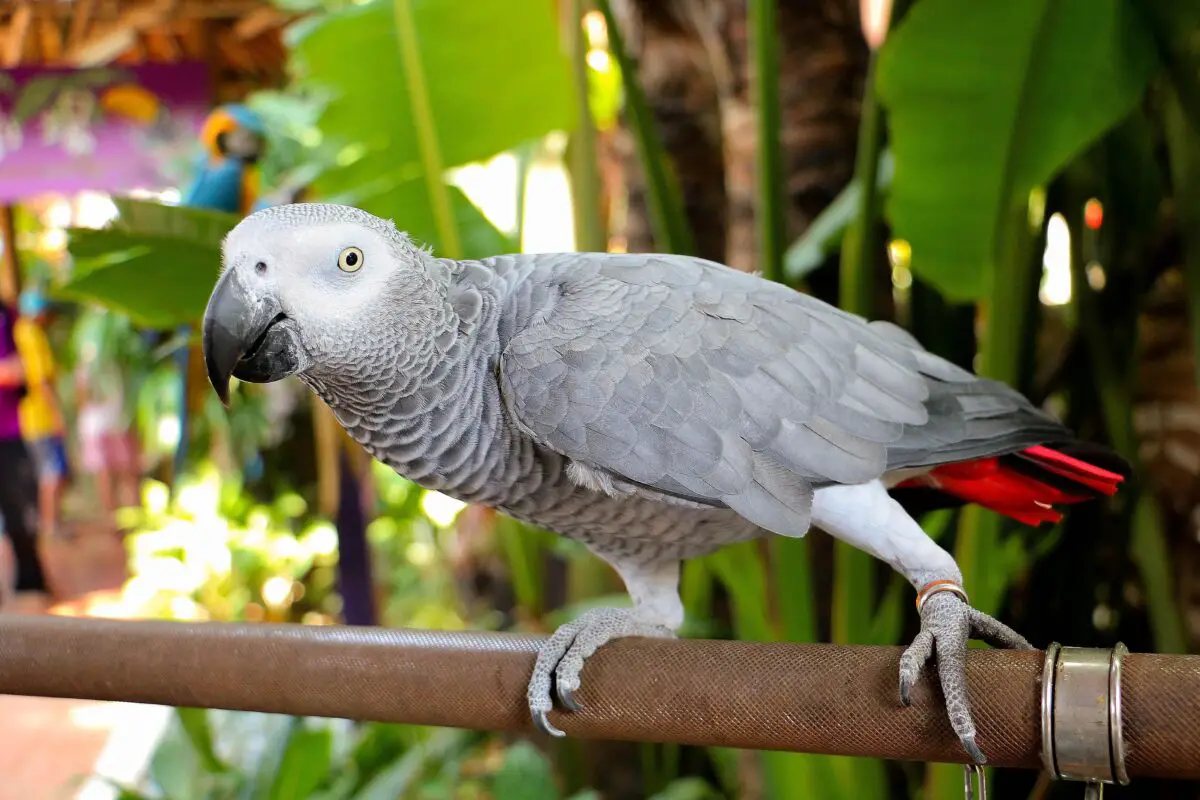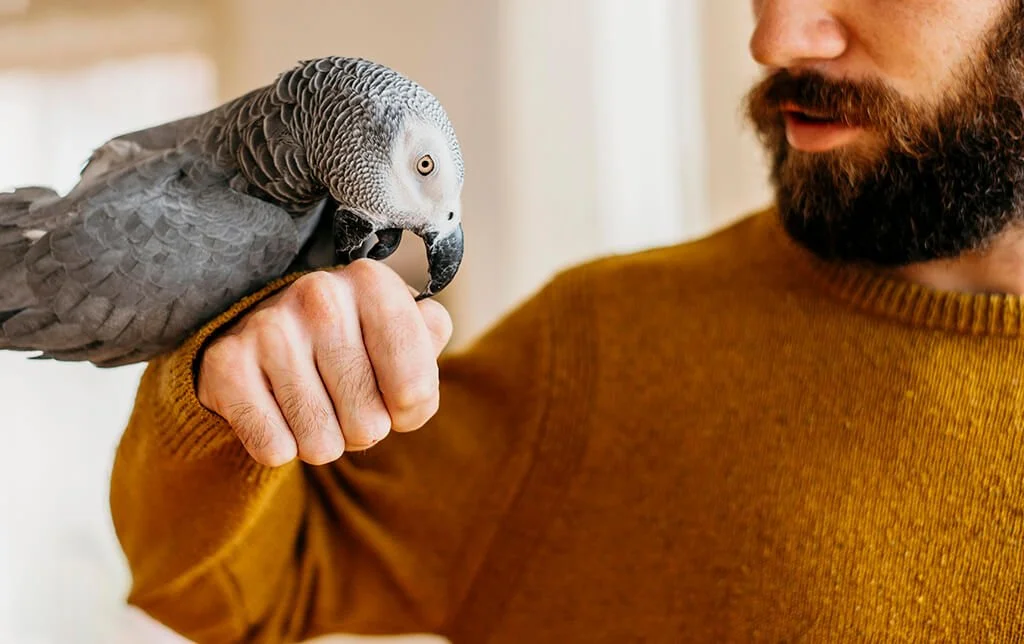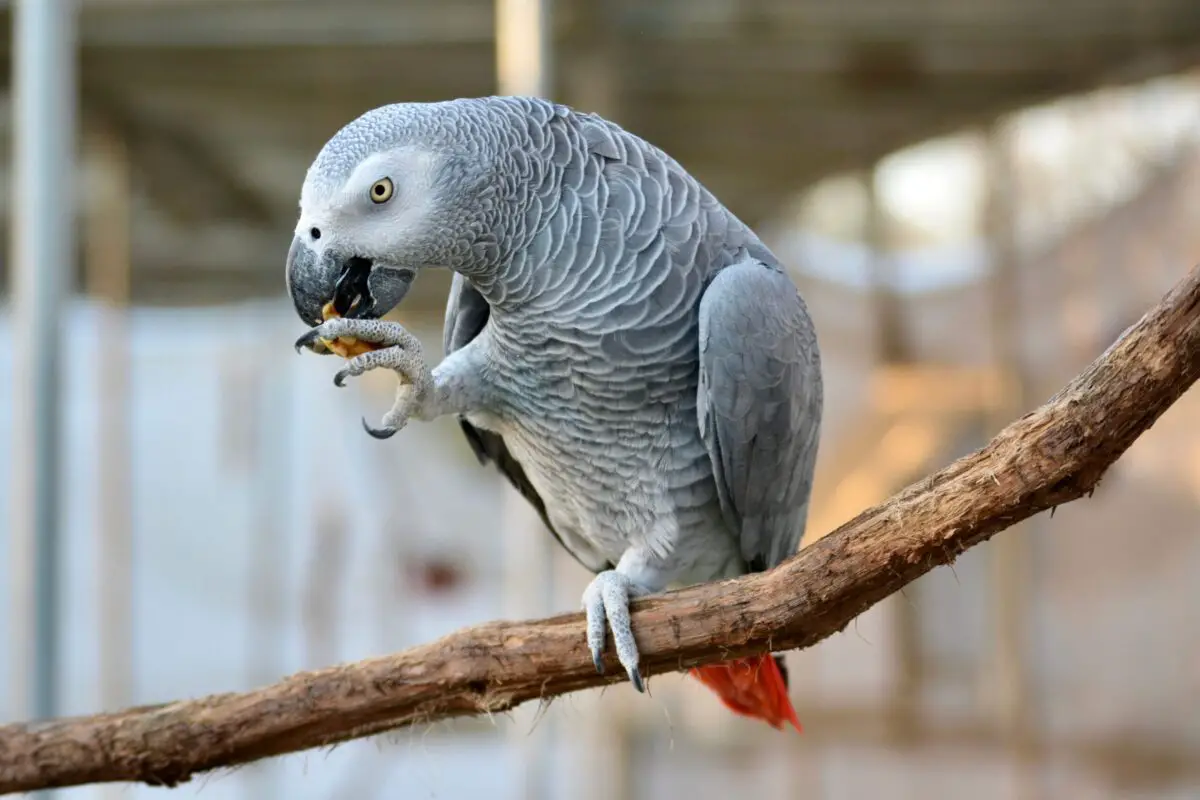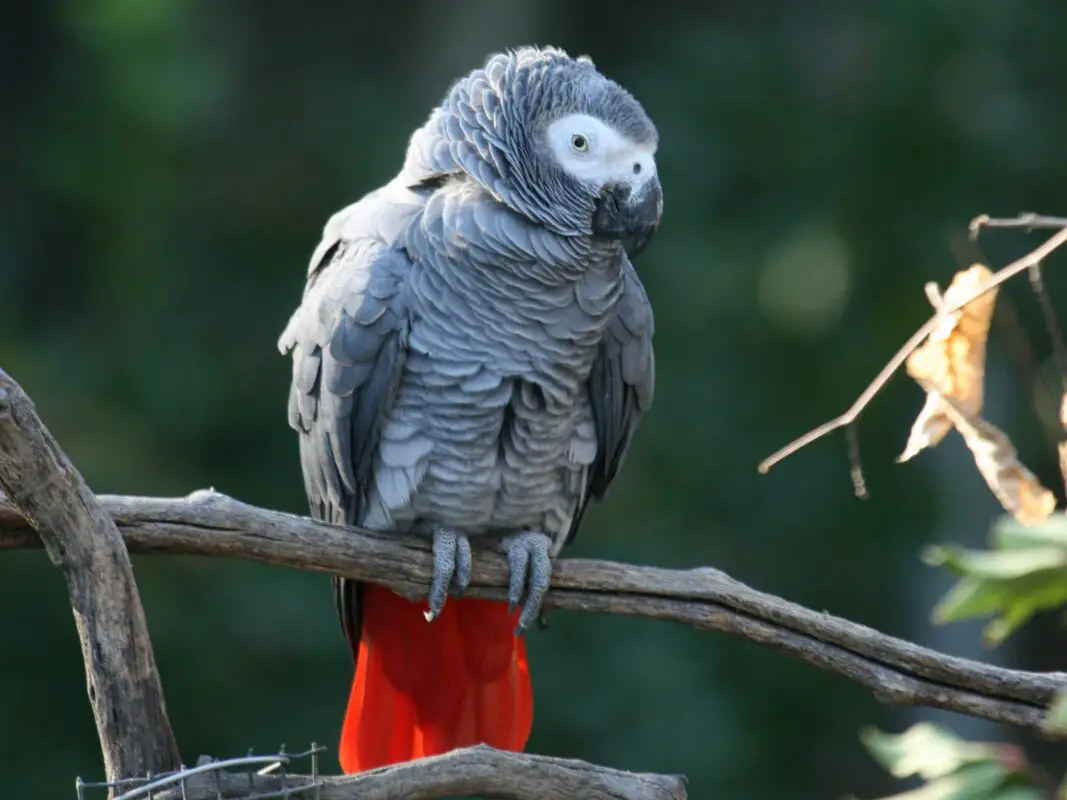Blogs, Behaviors & Training
Understanding African Grey Parrot Body Language
Understanding African Grey Parrot Body Language
Welcome to the fascinating world of African Grey parrot body language! These intelligent birds have a complex system of non-verbal cues that allow them to communicate their needs, emotions, and intentions. By understanding their body language, you can establish a deeper connection with your African Grey parrot and build a harmonious relationship. In this article, we will explore the various aspects of African Grey parrot body language, from common signals to interpreting their posture and gestures. Let’s dive in and unlock the secrets of communicating with these incredible creatures!
Key Takeaways:
- African Grey parrots have a rich body language system that helps them communicate.
- Understanding their body language can help you interpret their needs and emotions.
- Common signals include feathers fluffing, wing drooping, and head bobbing.
- Interpreting their posture and gestures can provide valuable insights into their messages.
- Observing and responding to their body language can help establish trust and strengthen your bond.
The Importance of Body Language in Communication
Body language is a powerful form of communication, and this is especially true for African Grey parrots. Understanding the non-verbal cues of these magnificent birds is vital in building a strong bond with them. By paying attention to their body language, you can gain deeper insights into their emotions, needs, and desires.
Communication goes beyond words. While parrots can mimic human speech, their true thoughts and feelings are often expressed through various non-verbal cues. These cues include body posture, facial expressions, vocalizations, and movement patterns. By interpreting and responding to these cues, you can establish a more meaningful and effective line of communication with your African Grey parrot.
Non-verbal cues provide important contextual information that enhances our understanding of our feathered friends. They can convey emotions such as happiness, curiosity, fear, and even affection. By observing their body language, you can gauge their comfort level, identify potential stress indicators, and tailor your interactions to meet their needs.
“Understanding and responding to your African Grey parrot’s body language is key to developing a strong bond and nurturing a healthy and harmonious relationship.” – Dr. Jane Harrison, Avian Behavior Specialist
Building a solid foundation of trust and understanding with your African Grey parrot requires attentive observation and interpretation of their body language. It allows you to respond appropriately to their needs and create an environment where they feel safe and secure.
Moreover, paying attention to non-verbal cues can help prevent misunderstandings and miscommunications. Many conflicts or behavioral issues in parrots arise from a lack of understanding between humans and birds. By recognizing and responding to your parrot’s body language, you can effectively address any concerns and foster a positive and peaceful living environment.
Take the time to closely observe your African Grey parrot’s body language during different situations, such as mealtime, playtime, and interactions with other humans or animals. Look for consistent patterns and behaviors that indicate their preferences, comfort, or discomfort.
Your parrot’s body language is their way of expressing themselves and communicating with you. By understanding their non-verbal cues, you can build a strong foundation of trust, enhance your interactions, and forge an unbreakable bond with your African Grey parrot.
Common Body Language Signals in African Grey Parrots
African Grey parrots are known for their highly expressive body language. By understanding the common signals they display, you can gain valuable insights into their behavior and better interpret their mood and intentions.
Feathers Fluffing
One common body language signal in African Grey parrots is feathers fluffing. When your parrot fluffs its feathers, it is often a sign of relaxation and contentment. It is their way of showing that they feel safe and comfortable in their environment.
Wing Drooping
Another signal to watch out for is wing drooping. When an African Grey parrot droops its wings, it can indicate fatigue or that they are ready for rest. Observing this behavior can help you provide your parrot with the appropriate rest time they need.
Head Bobbing
Head bobbing is a common behavior in African Grey parrots. It often signifies curiosity, attention, or excitement. When your parrot starts bobbing its head, it is a clear signal that they are engaged and interested in their surroundings.
Vocalizations
Vocalizations are an essential part of African Grey parrot communication. Pay attention to the different sounds and calls your parrot makes. Each vocalization can convey a specific meaning, such as happiness, irritation, or a desire for attention. By understanding their vocal signals, you can respond appropriately to your parrot’s needs.
These are just a few examples of the common body language signals displayed by African Grey parrots. By observing and interpreting their behavior, you can deepen your bond with your feathered companion and provide them with the care and attention they require.
Interpreting Posture and Gestures
When interacting with your African Grey parrot, understanding their posture and gestures is key to effective communication. These subtle cues can convey important messages and give you insight into your parrot’s mood and intentions. By paying close attention to their body language, you can deepen your bond and ensure a harmonious interaction.
The posture of an African Grey parrot can tell you a lot about their current state. If your parrot is standing tall with their feathers neatly groomed, it indicates confidence and relaxation. On the other hand, if their feathers are raised and their body is tense, it may be a sign of aggression or unease. By interpreting their posture, you can adjust your approach accordingly to create a safe and comfortable environment for your parrot.
Gestures also play an important role in understanding your parrot’s needs and desires. For example, if your parrot extends their wings slightly, it may be a sign of contentment or an invitation to play. Head scratching can indicate relaxation or a request for attention. By recognizing these gestures, you can engage in meaningful interactions and strengthen your bond.
Key Points:
- Posture and gestures are vital components of African Grey parrot body language.
- Observing their posture can help you gauge their level of comfort and mood.
- Gestures such as wing extension and head scratching can indicate specific needs or desires.
By becoming fluent in the language of African Grey parrot body language, you can create a deeper connection with your feathered friend and ensure a positive and enriching interaction experience.
Establishing Trust through Body Language
Building a strong bond with your African Grey parrot is a rewarding journey that requires effective communication and understanding. One powerful tool in achieving this is observing and responding to your parrot’s body language.
Body language can reveal a lot about your parrot’s emotions, needs, and intentions. By paying attention to their subtle cues, you can establish trust and strengthen your relationship. Here are some key ways body language can help:
1. Creating a Sense of Safety
When your parrot feels safe, they are more likely to trust you and form a deep bond. Observe their body language to ensure they are comfortable in their environment. Signs of relaxation include a relaxed posture, feathers lying flat, and calm movements. Responding to their comfort needs, such as providing a secure and enriched living space, can further solidify their trust.
2. Recognizing Stress and Calming Signals
Stress is natural for parrots and can arise from various factors, including changes in routine, new surroundings, or unfamiliar people. Monitor your parrot’s body language for stress signals, such as feather ruffling, pacing, or tail fanning. By understanding these signs, you can identify when your parrot is feeling overwhelmed and take steps to provide comfort and reassurance.
3. Acknowledging Boundaries
Respecting your parrot’s boundaries is essential for building trust. Pay attention to their body language when interacting with them. If they show signs of discomfort, such as leaning away, flinching, or vocalizing in a distressed manner, it’s crucial to give them space and reassess your approach.
By respecting their boundaries, you demonstrate that you understand and prioritize their well-being, strengthening the bond of trust between you both.
4. Encouraging Positive Reinforcement
Positive reinforcement plays a vital role in parrot training and bonding. When your parrot exhibits behaviors that you appreciate, such as calmness or willingness to interact, reinforce these actions with rewards and praise. Pay attention to their body language during training sessions to gauge their response, adapting your approach accordingly for effective communication.
“Understanding your African Grey parrot’s body language is an invaluable tool in creating trust and forming a strong bond. By observing cues, respecting boundaries, and providing positive reinforcement, your parrot will feel understood, supported, and valued in your relationship.” – Expert Avian Trainer
Remember that trust-building takes time and patience. Consistent communication through body language will help nurture a deep and meaningful connection with your African Grey parrot.
Conclusion
Understanding African Grey parrot body language is key to effective communication and forming a strong bond with these intelligent birds. By observing their behavior, interpreting their signals, and understanding their posture, you can gain valuable insights into your parrot’s needs and emotions.
Through their body language, African Grey parrots express a wide range of emotions, including happiness, fear, and curiosity. By paying attention to their feathers, wings, and head movements, you will be able to determine their mood and respond accordingly.
Building trust is essential in any relationship, and the same applies to your parrot. By recognizing and responding to their body language cues, you can create a nurturing environment that fosters trust, allowing your parrot to feel secure and comfortable in your presence.
Remember, understanding African Grey parrot body language is a continuous learning process. The more you observe and interact with your feathered companion, the better you will become at understanding their unique cues and deepening your connection.
FAQ
How can I understand African Grey parrot body language?
Understanding African Grey parrot body language requires careful observation and familiarity with their common behaviors and signals. By studying their posture, gestures, and non-verbal cues, you can gain insight into your parrot’s mood, intentions, and needs.
What are some common body language signals exhibited by African Grey parrots?
African Grey parrots may exhibit signals such as feathers fluffing, wing drooping, head bobbing, and vocalizations. These behaviors can indicate various emotions, including happiness, fear, or frustration. By recognizing these signals, you can respond appropriately and provide a conducive environment for your parrot.
How can I interpret the posture and gestures of African Grey parrots?
Posture and gestures can provide valuable insights into your parrot’s communication. Raised feathers can indicate excitement or agitation, while head scratches may signal contentment. It’s essential to understand the context and accompanying signals to interpret your parrot’s message accurately.
Why is body language important in communication with African Grey parrots?
African Grey parrots rely heavily on non-verbal cues for communication. Understanding their body language allows you to build a deeper connection, establish trust, and respond appropriately to their needs. It enhances the bond between you and your parrot and strengthens your overall relationship.
How can observing and responding to body language help establish trust?
When you pay attention to your African Grey parrot’s body language and respond accordingly, it shows that you understand and respect their needs. This fosters trust between you and your parrot and creates an environment where they feel secure and comfortable expressing themselves.
Why is understanding African Grey parrot body language important for a harmonious relationship?
Understanding African Grey parrot body language is key to effective communication and establishing a harmonious relationship. When you can decipher their needs, emotions, and intentions, you can better meet their requirements and provide a nurturing and enriching environment for them.





